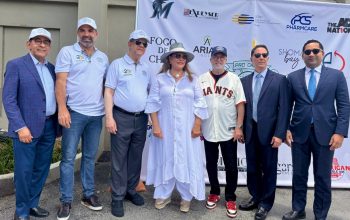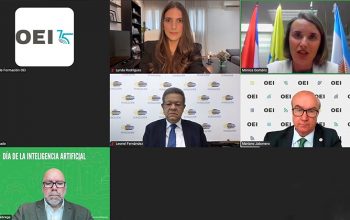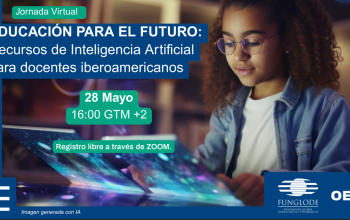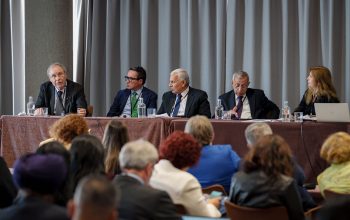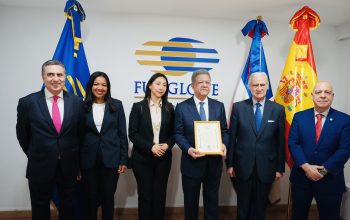news
GFDD Coordinated Panel at UN Headquarters Assesses the Environmental and Social Price of Gold
May 5, 2011
On Tuesday, May 3, 2011, Global Foundation for Democracy and Development (GFDD) and Fundación Global Democracia y Desarrollo (FUNGLODE), in partnership with South-South News and the Council on Hemispheric Affairs, coordinated the panel “Global Perspectives on Gold Mining: Evaluating Potential and Constraints” at United Nations Headquarters in New York City, during the celebration of the Nineteenth Session of the Commission on Sustainable
Development (CSD) of the United Nations Economic and Social Council (ECOSOC).
 The topic of the panel, which forms part of the CSD’s 2010-2011 agenda of work, is of particular interest to GFDD and FUNGLODE, as the Pueblo Viejo gold mine in the Dominican Republic will soon be, in 2012, the fourth largest operating gold mine in the world,
The topic of the panel, which forms part of the CSD’s 2010-2011 agenda of work, is of particular interest to GFDD and FUNGLODE, as the Pueblo Viejo gold mine in the Dominican Republic will soon be, in 2012, the fourth largest operating gold mine in the world,
yielding the potential to substantially alter the course of the country’s sustainable development.
The panel featured presentations by: Benjamin Peachey, Communications Director, International Council on Mining and Metals (ICMM); Zoe Amerigian, Researcher, Council on Hemispheric Affairs; Manuel Bonilla, President, Pueblo Viejo Dominicana Corporation, Barrick; as well as remarks by
Asunción Sanz, Director of GFDD’s Washington DC Office, and Ambassador Francis Lorenzo, President of South-South News, and moderation by Kerry Stefancyk, GFDD Representative to the United Nations.
Speakers discussed the potential and constraints of the gold mining sector in relation to the achievement of national economic and social objectives and
environmental sustainability. Critical topics addressed included: international performance standards and assessment; environmental impact; human health and safety; socio-economic potential; technological innovation; corporate social responsibility; and the need for effective management of revenue flows.
Mr. Benjamin Peachey provided an overview of the work of his institution, which seeks to set performance standards for the mining industry, in order to enhance the
sector’s contribution to sustainable development.
 ICMM puts forth guidelines related to safety, social and environmental responsibility, and transparency. Inaugurated in 2001, the Council has 18 company members and 30 association members in 54 countries around the world. The ICMM conducts work in the following five areas: Reporting
ICMM puts forth guidelines related to safety, social and environmental responsibility, and transparency. Inaugurated in 2001, the Council has 18 company members and 30 association members in 54 countries around the world. The ICMM conducts work in the following five areas: Reporting
& Assurance; Socio-economic Contribution; Environmental Contribution; Health & Safety; and Material Stewardship.
The Council’s Communications Director discussed in brief the institutions various publications on topics as diverse as Mining and Biodiversity; Mining and Occupational Health Risk Assessment; Elimination of Fatalities; and Climate Change. He also highlighted their multi-stakeholder partnerships for development initiatives related to:
poverty reduction; revenue management; regional development planning; local content; social investment and dispute resolution.
Mr. Peachey concluded by disclosing the economic performance of mining countries per ICMM assessment standards. Chile, Botswana, Malaysia, Tunisia, Ghana and Mexico came out as top performers, whereas Bolivia, the Central African Republic, the Congo, Liberia, Niger, the Philippines, Sierra Leone and Zambia made the list of weak
performers.
In a final statement, the ICMM representative stressed the important development gains that the Pueblo Viejo project can represent for the Dominican Republic, and the importance of effective management of revenue flows in order to advance national sustainable development goals, underscoring the approximately 25 year lifespan of the mine.
Ms. Zoe Amerigian presented social and environmental impacts of gold mining in Latin America.
Amerigian underlined the multiple environmental consequences stemming from the mining of this metal which is used 50% of the time for non-essential purposes, and which produces more waste per ounce than any other metal.
 The COHA research associate distinguished between large-scale and small-scale mining practices, referencing
The COHA research associate distinguished between large-scale and small-scale mining practices, referencing
large-scale water consumption, acid mine drainage, cyanide contamination and increased sediment in rivers, open-pit mining and mountain-top removal as critical environmental concerns associated with large-scale mining practices. She identified lack of education amongst small-scale miners about environmental and health effects and widespread use of mercury as top environmental and human health risks linked to the informal mining sector.
Worker exploitation was an
additional negative implication associated with large-scale mining in the region voiced by Amerigian.
The environmental scholar provided examples from Colombia and Honduras during her presentation. In closing, Amerigian put forth the following recommendations for governments, corporations and communities: increased education for miners, greater communication between companies and communities, strengthened monitoring and enforcement mechanisms, greater balancing of
environment and economic concerns.
The last presentation of the panel was given by Pueblo Viejo Dominicana Corporation President, Mr. Manuel Bonilla. Mr. Bonilla provided a detailed description of the production processes implemented by his corporation, as well as the strategies being realized to lessen the degree of environmental impact.
 The Pueblo Viejo Dominicana Corporations is a joint venture between Barrick Gold (60%) and Goldcorp (40%). The budget for the total project is US$3,300 million. To date, the project is 60% complete. The Dominican government will receive 50% of net cash flows, once investment has been recovered at a 10% internal return rate. Mr. Bonilla confirmed that the government will receive 3.2% of sales as royalty from day 1, and 25% from income tax
The Pueblo Viejo Dominicana Corporations is a joint venture between Barrick Gold (60%) and Goldcorp (40%). The budget for the total project is US$3,300 million. To date, the project is 60% complete. The Dominican government will receive 50% of net cash flows, once investment has been recovered at a 10% internal return rate. Mr. Bonilla confirmed that the government will receive 3.2% of sales as royalty from day 1, and 25% from income tax
as soon as profits are generated. The corporation’s president projected that the Dominican government will receive approximately US$8,000 million during the life of the mine.
Mr. Bonilla went on to discuss the environmental remediation efforts being carried out by Barrick Gold Corporation, since assumption of the project in 2006, to address past damage caused by the corporation Rosario Dominicana. These clean-up efforts include hazardous waste clean-up and
remediation.
Other Barrick-led environmental initiatives described by Mr. Bonilla were: coconut mats for erosion control; relocation of protected species in collaboration with a local zoo; revegetation initiatives; air monitoring; acid rain drainage dams; water treatment plants; tailings dam; neutralization of sulfuric acid with the use of lime; use of autoclaves.
 Prior to concluding his presentation, he also spoke of the Barrick’s complaints handling mechanism and their community-social investment programs.
Prior to concluding his presentation, he also spoke of the Barrick’s complaints handling mechanism and their community-social investment programs.
The coordination of the panel was part of a larger commitment of Global Foundation for Democracy and Development and Fundación Global Democracia y Desarrollo to contribute to ECOSOC’s agenda of work. The foundations have had consultative status with
ECOSOC since the year 2004.
Presentations:
See South-South News footage of event:
Related links:
- www.coha.org
- www.icmm.com
- http://www.barrick.com/GlobalOperations/PuebloViejoProject/
- www.southsouthnews.com
- http://www.un.org/esa/dsd/csd/csd_csd19.shtml

